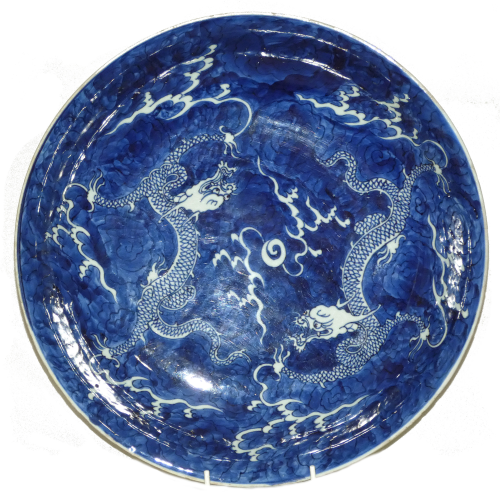

The home of Imperial porcelain manufacture from the Ming dynasty onwards, the Jingdezhen Kilns of Jiangxi province in Southern China are famed for producing the finest quality Chinese porcelain for both the domestic and export markets.
Although a comparatively remote location, Jingdezhen was ideally suited for the production of porcelain given the area’s abundance of high quality Petuntse deposits, forests to provide fuel for the kilns and the Changjiang river offering a convenient means of shipping.
Petuntse, or porcelain stone, is the essential raw ingredient for the manufacture of Chinese porcelain. Indeed, the term petuntse means “little white bricks”, a reference to the form in which the material was commonly transported to the kilns.
It is believed that pottery production in the region dates back to the sixth century BC, although it was not until the reign of Emperor Zhenzong of Song (968-1022) that Jingdezhen became a major kiln site.
From the 14th century, under Ming dynasty rule, official Imperial kilns were established at Zhushan. These were tasked exclusively with supplying the extraordinary demand for high quality porcelain for the imperial household.
The principal reason for this imperial patronage was the development of underglaze blue porcelain which was developed in Jingdezhen and quickly made the area one of the word’s first industrialised towns.
Jingdezhen blue-and-white porcelain, as it is popularly known, used a blue pigment made from cobalt oxide imported from Persia, and although initially intended for export to overseas markets quickly became fashionable in China.
In addition to supplying the main palaces and other residences of the Imperial court, porcelain was required for the Imperial temples, monasteries, and shrines, and as gifts for visiting dignitaries. In 1433 alone a single order was placed for 443,500 individual pieces for the Imperial court.
Until the emergence of blue and white porcelain, the taste at the Imperial court was for Longquan celadon or greenware ceramics which had been fashionable from the 10th century onwards. Yet by the mid-15th century, the Imperial celadon kilns were closed, further cementing Jingdezhen’s control of the market.
The use of a copper based red underglaze also allowed the Jingdezhen craftsmen to produce red and white porcelain and blue and red pieces. Perhaps the rarest works of the time feature a copper red monochrome glaze used exclusively under the reign of the Xuande Emperor (1436-1435) which have proved impossible to accurately replicate since his death.
The late Ming Dynasty was beset with financial crises and lengthy military campaigns and the quality of production at Jingdezhen declined due to a lack of patronage. Pieces created at this time (1620-1683) are commonly known as Transitional ware, but the kilns were able to survive largely due to the production of Tianqi porcelain for the Japanese market.
Tianqi ware was often used as part of the Japanese tea ceremony, with designs focussing on landscapes, animals, birds and flowers in stark contrast to the more traditional Chinese porcelain styles of previous eras.
With the growth of trade between Europe and the Far East in the 17th century, the Transitional period also brought a dramatic rise in the export of Chinese porcelain to European markets with the Dutch and East India Companies importing more than 60 million pieces between them.
Fortunes at Jingdezhen recovered quickly when the new Qing Dynasty resumed large scale production under the Kangxi Emperor in the late 17th century. Once again, this popularity was driven by innovation with the introduction of new overglaze colour palettes known in the West as famille verte, rose, jaune and noire.
In China this style of porcelain is known collectively as yangcai, which translates as “foreign colours”, since the pigments were introduced from Europe in the mid-1680s. Although the vast quantity of these wares were produced for the export market, many of the finest examples graced the palaces of the Qianlong Emperor (1735-1796).
Sadly, the Imperial kilns in Jingdezhen along with many of the kilns in the surrounding area were destroyed during the Taiping Rebellion 1850-1864 and the regions ceramics industry fell into decline. By 1949 the population had fallen to a third of its 18th century heyday but reorganization in the 1950s has seen Jingdezhen once again become the centre of China’s ceramics manufacturing trade.
Visitors to the city can see the city’s rich ceramic heritage preserved and demonstrated at the Jingdezhen Ancient Kilns and Folk Custom Museum.

